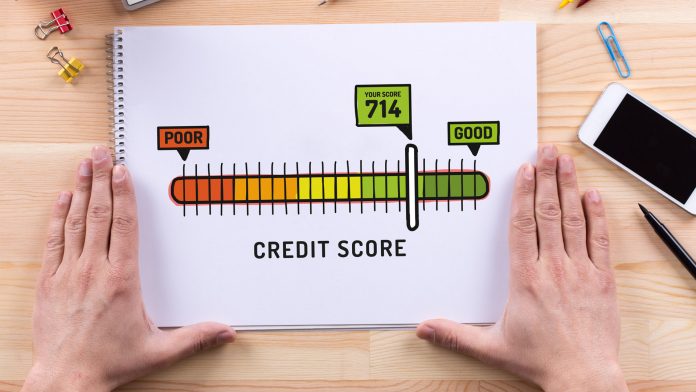Key Highlights
- Average FICO credit score hit 711 in July, a record high
- There is lag time between when big economic event occurs and when FICO score reflects that event
- During Great Recession begun in 2007, average FICO scores hit lowest point in late 2009
When discussing FICO credit scores, here are several reference points:
- The highest credit score possible, a perfect credit score, is 850 (only 1% of 200M consumers has a perfect credit score)
- The lowest possible credit score is 300
- The average FICO score is 704
- FICO uses percentages to indicate the importance of each component of credit scores
- 35% – payment history (do you pay your debts on time?)
- 30% – total amount of debt owned
- 15% – length of credit history
- 10% – new credit (did you just buy something and take on new debt in order to buy it?)
- 10% – credit mix (credit cards, mortgage, auto loan, student debt, etc.)
FICO credit scores are REALLY important as they affect the interest rate you would pay on your debts (credit cards, home mortgage, etc.) In other words, aim for credit scores of 740 and above.
So what has been going on with FICO credit scores since the COVID pandemic outbreak? Amazingly, the average FICO credit score hit 711 in July, a record high.
How can this happen? Almost counter-intuitively in our world of instant everything, the average FICO score is a lagging indicator of economic health, according to Ethan Dornhelm, head of research and analytic development with FICO scores globally. Dornheim, on CNBC Make It, said there is usually a “bit of a lag” between when a macroeconomic event or disruption occurs, such as the COVID pandemic outbreak, and when the average FICO score reflects that disruption.
For example, Dornhelm pointed to the Great Recession that began in 2007. The average FICO score during the Great Recession hit its lowest point in late 2009, over one year after Lehman Brothers collapsed in September 2008 and almost two years after economists defined the onset of the recession.
Today, in the midst of a global pandemic that has impacted tens of millions of people who continue to struggle with joblessness and paying their bills, average FICO credit scores continue to rise to record high levels. Clearly, the record high of 711 in the US in July does not reflect our current state of economic health.
Dornhelm said, “The FICO score shouldn’t be thought of as a leading indicator or as a predictor of where the economy is headed.”
Early government efforts concerning the economic impacts of the COVID pandemic via the CARES Act, the mortgage forbearance programs, the evictions moratoria, the direct payment stimulus checks and the enhanced unemployment benefits helped millions of consumers stay afloat.
For example, only 7.3% of borrowers had missed a mortgage payment that was 90 days overdue by the time July 2020 rolled around. That 7.3% compares favorably to the 8.1% of borrowers who had missed a mortgage payment in January of 2020.
Since staying current on payments represents approximately 35% of an overall FICO score, these relief efforts made a huge impact on credit scores at large. Importantly, forbearance and deferment agreements do not negatively impact FICO scores. Also importantly, the average credit card balance in July was $6,004, down from an average of $6,934 in January and the total amount someone owes accounts for some 30% of the FICO score.
Now in October with another COVID surge, only 50% of the 22M jobs lost recovered, close to 800,000+ people filing new unemployment claims weekly, 40% of small businesses either closed or on the verge of closing and all government relief efforts expired, how will consumers and their respective credit scores react going forward?
Dornhelm only said, “Consumers are making do with whatever the state unemployment benefit level is.”
Thanks to FICO, CNBC and CreditKarma.
Also read: Applying of a HELOC? Do It Sooner Rather than Later, How to Virtually Hold Hands with Your First-Time Buyers, Podcast: “Tim and Julie, please HELP!?…My Deals Are Blowing Up…I Need Help NOW!”
























